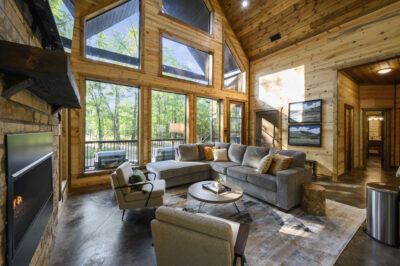[trx_columns fluid=”no” margins=”yes” top=”inherit” bottom=”inherit” left=”inherit” right=”inherit” count=”1″]
[trx_column_item align=”justify”]
Senior Safety: Exercises that Help Prevent Falls
[trx_image url=”https://model55.com/wp-content/uploads/2018/07/senior-exercises.jpg” align=”right” shape=”square” width=”35%” height=”35%” top=”inherit” bottom=”inherit” left=”inherit” right=”inherit”]
Falling is the number one safety concern among seniors, who suffer injuries from falls more often than any other cause. There are many reasons older adults fall, including tripping hazards, soft and brittle bones, dementia, vertigo, and spatial disorientation. In many cases, falls could be prevented by strengthened leg muscles and improved overall muscle flexibility, which can be achieved through exercise routines that enhance mobility and muscle tone.
By making a point to incorporate specific exercises into your daily routine, you can significantly change the potential for falls related to physical issues. It is recommended that seniors get 150 minutes of exercise each week, including exercises aimed at strengthening legs two or more days a week. Consider the following exercise to help improve your mobility and strength.
Balance exercises
Many balance exercises can easily be done at any time, in any setting. Try sitting down and standing without using your hands for support. This will strengthen your core as well as your leg muscles. Try balancing yourself on one foot, hold for 10 seconds, then repeat 10 times, then switch to the other foot and do likewise. Try walking heel to toe for about 20 steps, selecting a clearly distinguished and unimpeded route, then repeat going backward. Or try doing back leg and side leg raises (10 to 15 times alternating legs) using a strong chair to steady you.
Leg-strengthening exercises
Strong ankle and calf muscles are very important in preventing falls. Toe stand exercises are an excellent way to work these muscles, and they’re easy to do. Hold the back of a chair, bend at the knees, push up onto your tiptoes as high as you can, then slowly lower to the floor, repeating 15 times. Knee curls are designed to strengthen back and buttock muscles, which increase lower body strength, an important component in preventing falls. Holding onto a chair, bend at the knees with feet shoulder-width apart, lifting a leg behind you, then bend the knee and bring your heel toward the buttock. Then lower the leg to a standing position. Do this 15 times with each leg. If these prove too difficult, you can do leg extension exercises sitting in a chair.
Walking
If you’re sufficiently mobile, walking on a regular basis is one of the best ways to strengthen leg muscles and improve cardiovascular health. Consult with a doctor to determine how far and how often you should walk. If you experience any kind of pain, shortness of breath, or light-headedness, stop immediately and contact your doctor. Many seniors benefit from water-based exercises, such as water aerobics. Many water exercises can increase leg and lower-body strength and improve balance.
Tai chi
Tai chi is an ancient form of physical exercise and mental discipline that’s excellent for improving leg and lower-body strength. It’s a meditative exercise regimen based on 19 movements using slow, circular motions. Tai chi classes can be found in most cities, or a YouTube video can show how to perform the basic movements. Many seniors find it to be a calming, soothing activity that both strengthens and boosts confidence, an important factor for seniors who have been injured in a fall and worry about subsequent falls.
Stretching
A crucial supplement to exercising, stretching is one of the best things you can do for your body to keep it limber and able to endure frequent exercise. Stretching can also lower blood pressure, reduce stress and promote relaxation. Add some stretching exercises to your routine to give you an extra boost in fall prevention.
Balance and strengthening exercises can have the dual effect of building leg and lower-body muscles while boosting an older adult’s confidence in their ability to avoid falling. Most exercises are simple, can easily be done in the home, and don’t take much time. The long-term benefits of exercising leg muscles can keep older adults from suffering potentially catastrophic falls. [/trx_column_item]
[/trx_columns]
From Our Guest Blogger Series
About the Author:
Sharon Wagner | sharon.wagner@seniorfriendly.info | seniorfriendly.info





